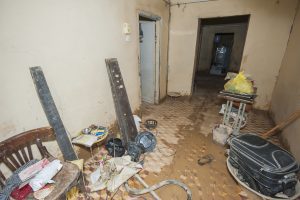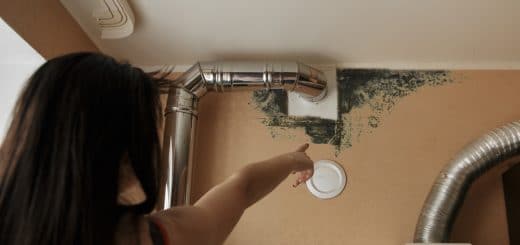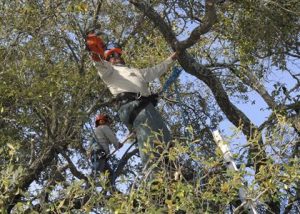Things You Need to Know about Water Damage Mitigation & Restoration
Having a flooded home is the last thing you want, especially in the middle of a family gathering. Imagine yourself enjoying and having a good time with your friends or family and the pipe bursts.
Unlike a WiFi spy camera that captures everything that goes on even behind closed doors, water damage causes are very hard to identify. If you’re not an expert in water damage mitigation and restorationRestoration is the process of returning a property to its pr... More, then it’s best to leave this colossal task to the experts.
However, it does help to know the basics of water damage when it comes to mitigation and restorationRestoration is the process of returning a property to its pr... More. Here are a few:
1. Call in the experts right after a water damage
When you see a leaking faucet or a minimally flooded floor, the first instinct might be to relax a bit because it is just that – minimal damage. However, what homeowners don’t know is that there could be underlying issues that are way more severe than what you see surface-level.
For instance, when carpeting or wood gets wet, it can be a breeding ground for moldMold is a type of fungus that grows in damp or humid conditi... More. Homeowners will also have a 24 to 48-hour window to prevent it. Moreover, the only option to prevent moldMold is a type of fungus that grows in damp or humid conditi... More from attacking wet things, furniture, and home structureStructure refers to the framework or components of a buildin... More is by dryingDrying is the process of removing moisture from materials, s... More it. Unfortunately, some don’t have the right equipment to dry thick and various materials fast.
Therefore, the most important and obvious thing you should bear in mind is knowing when to call the experts. Make sure to call in the experts when you see telltale signs of water damage. Here are a few:
- Musty and mildewMildew is a type of fungus that grows on damp surfaces, typi... More smell
- Stains and discoloration
- Cracking, bubbling, and peeling paint
- MoldMold is a type of fungus that grows in damp or humid conditi... More
- Unusually high water bill
- Puddles of water
- Sounds of running water
2. Know the categories of water damage
Once you call in the experts, the first step in determining what type of water damage you have is to know which category your situation belongs to. Every water damage level depends on the severity of each situation.
Here are the three water damage categories:
- Loss of clean water
- Grey water from toilet bowls or any water discharge from washing machines or dishwashers
- Contaminated water from sewageSewage is wastewater containing biological and chemical cont... More systems, toilet leaks, or any external water sources like seawater, rise of ground surface water from rivers, or other water-related natural disasters

Consider that water damage mitigation is not a permanent solutionA solution is a homogeneous mixture of two or more substance... More
3. Water mitigation comes first before restoration
In the event of water damage, even water damage restoration companies ensure to mitigateTo mitigate is to reduce or limit the severity of damage, ri... More the damage initially. This is to prevent further damage or losses. However, take note that water damage mitigation is not a permanent solutionA solution is a homogeneous mixture of two or more substance... More. This is only temporary and its primary goal is to avoid more disasters from the water damage.
Here’s how water mitigation works:
- Remove drywall, flooring, damaged furniture, and materials
- Save, clean, and disinfect furniture and materials that are salvageable
- Ensure the home’s structureStructure refers to the framework or components of a buildin... More is still stable
- Extract water
- Dry wet furniture, materials, and the entire home
- Install board-up windows, tarps, and other means of protecting the home
4. Experts perform water restoration after mitigating damage
Any water damage professional knows that water damage mitigation and restorationRestoration is the process of returning a property to its pr... More go hand in hand. Right after the mitigation process, water damage restorationWater damage restoration is the professional process of clea... More comes next. The main purpose of restoring the home is to return its condition to the pre-water damage loss.
However, experts can’t perform the restorationRestoration is the process of returning a property to its pr... More before mitigation. After everything is dried up, cleaned, disinfected, and protected, it’s time to restore some rundown materials. Here are a few steps on water damage restorationWater damage restoration is the professional process of clea... More:
- Replace damaged flooring and walls
- RepairRepair is the act of fixing or restoring damaged property, m... More roof damage
- Eradicate moldMold is a type of fungus that grows in damp or humid conditi... More
- Conduct moisture and humidityHumidity is the amount of moisture or water vapor present in... More testing
5. Observe safety precautions
Although calling the experts will keep you safe, homeowners must still practice safety precautions when dealing with water from unknown sources. This might be toxic water that can contain silt, pesticides, or other external health hazards.
If you have been exposed to water from damage, make sure to always wash with anti-microbial soap. Immediately change your clothes and wash them off from any harmful hazards in the water. And make sure to separate them from your other clothes so you don’t contaminate the clean ones.
Last but not least, observe health safety by avoiding touching your mouth, nose, or eyes when exposed to water during water damage. If you have cuts that were exposed to water damage, ensure that you take care of them by putting on some antibiotic cream.
Wrap Up
Water damage can be a pain in the neck. But with this knowledge, you can respond quickly to water damage. However, always make sure that you rely on water damage experts to totally repairRepair is the act of fixing or restoring damaged property, m... More the loss and damage.












